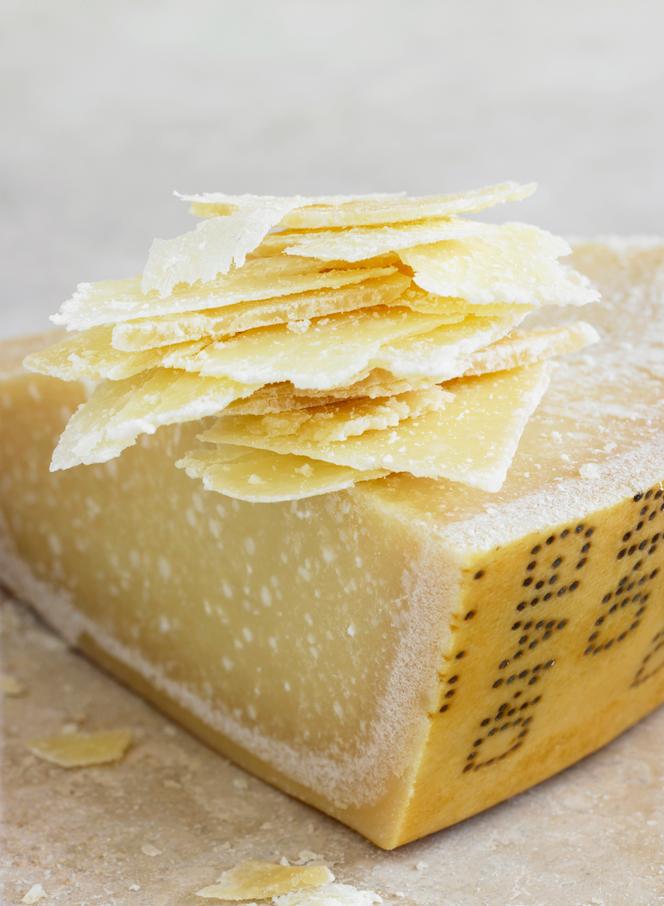


Stefania Di Petrillo, who wrote a recently republished book, Le Parmesan. Dix Façons de le Préparer ("Ten Ways of Cooking with Parmesan," 2015), tells a funny anecdote. When she was a child in Parma (Italy), the family pediatrician prescribed a curious remedy: Parmigiano Reggiano. "It was said to help children develop healthily," she laughed. "Now that I'm in France, I still regularly have about 20 kilos of parmesan delivered to me, cut into pieces called 'cones,' which I partly redistribute around me."
Whenever she visits her hometown, the author never returns without some of this delicious hard cow cheese – it clears customs at the airport, she checked. She noticed how it has gradually earned a spot in the pantheon of Italian dairy products. "It's not like mozzarella, it has character and an identity," she stressed. "For me, it is in perfect harmony with the mists of Parma and the melodies of Verdi, who was born in the region, but it's been adopted by the entire country. It adds a creaminess to risottos in the north. In Tuscany, it's shaved onto beef tagliata, just-seared slices served with arugula. And in the South, it adds delicacy to pasta and vegetable dishes."
You have 85.87% of this article left to read. The rest is for subscribers only.
